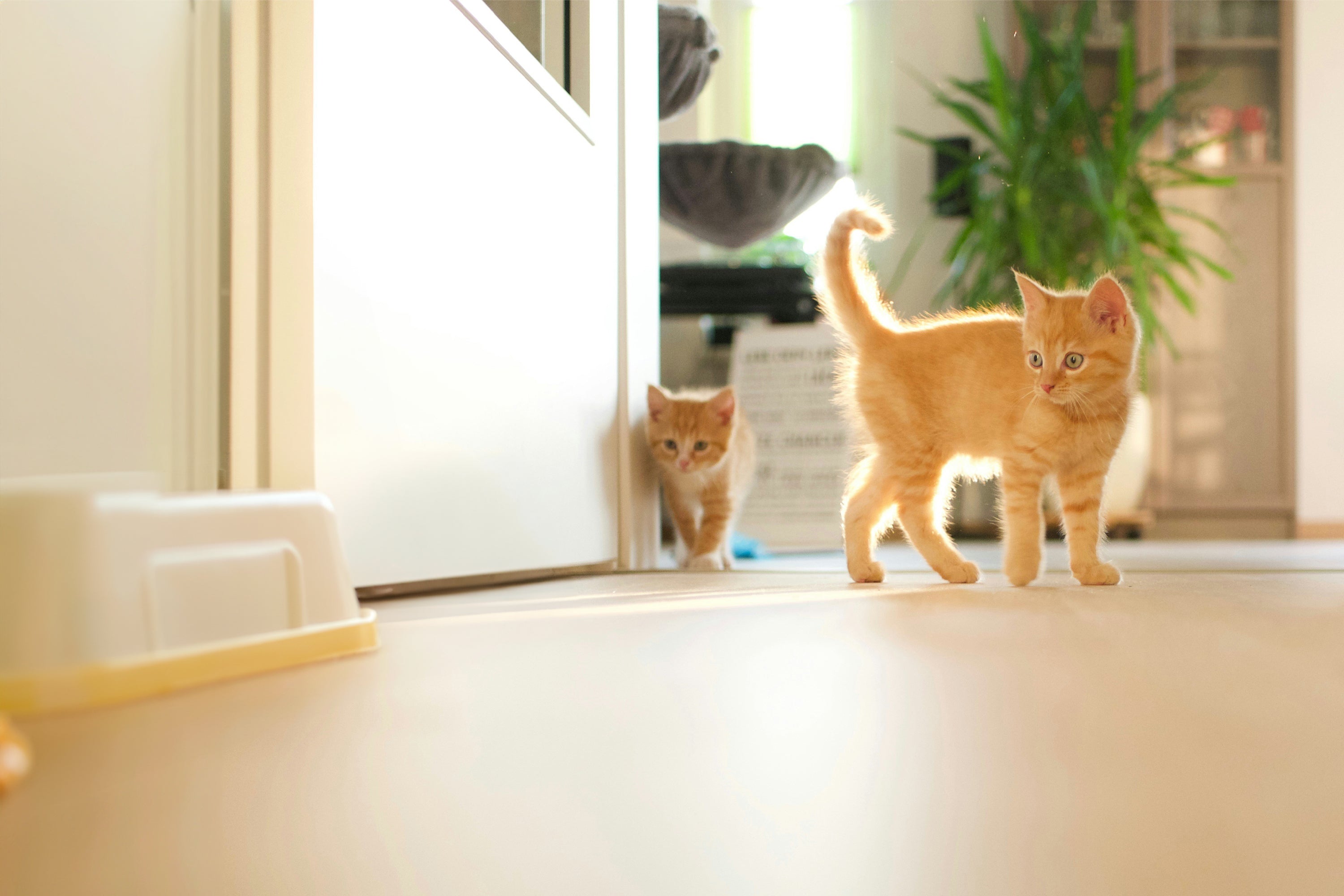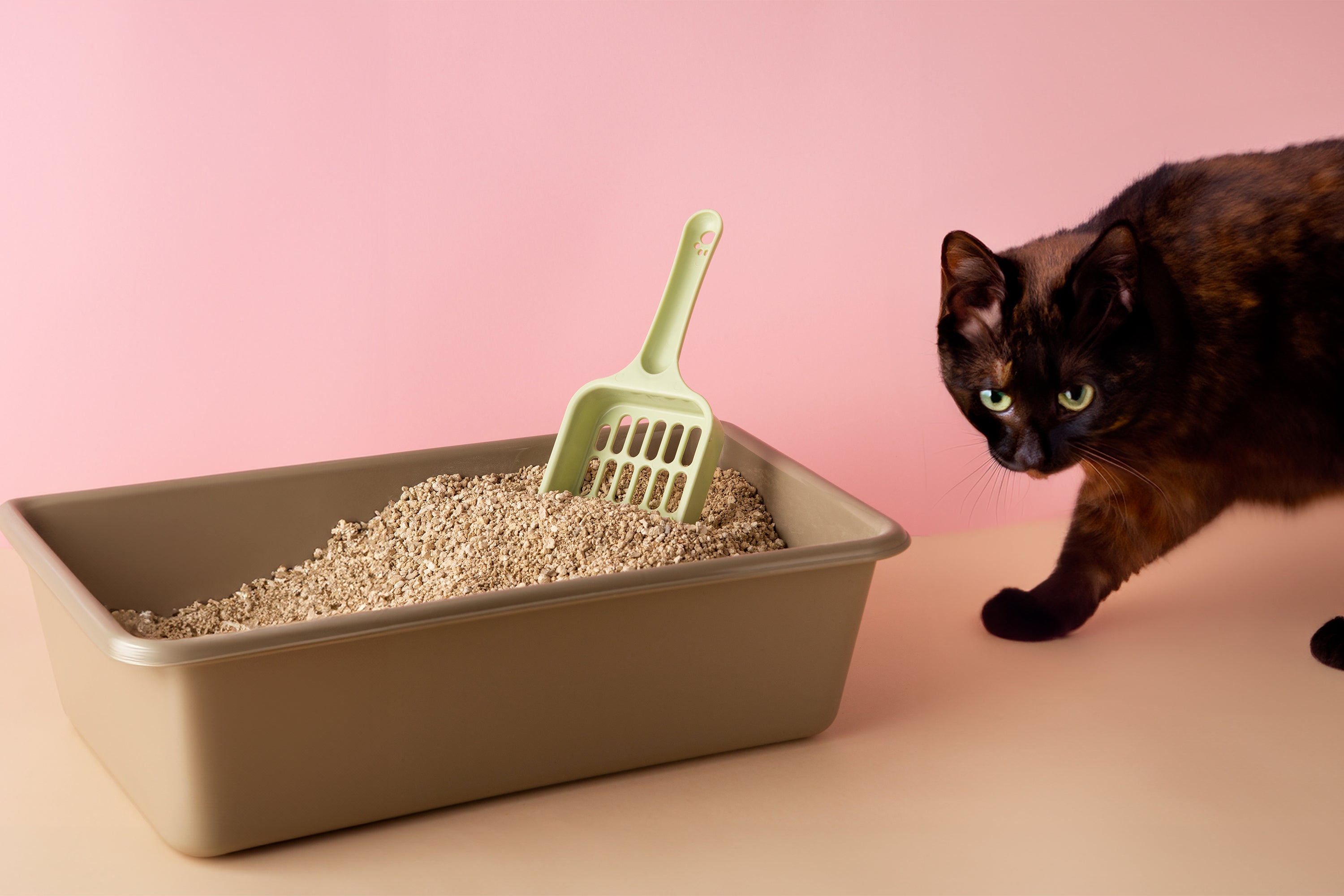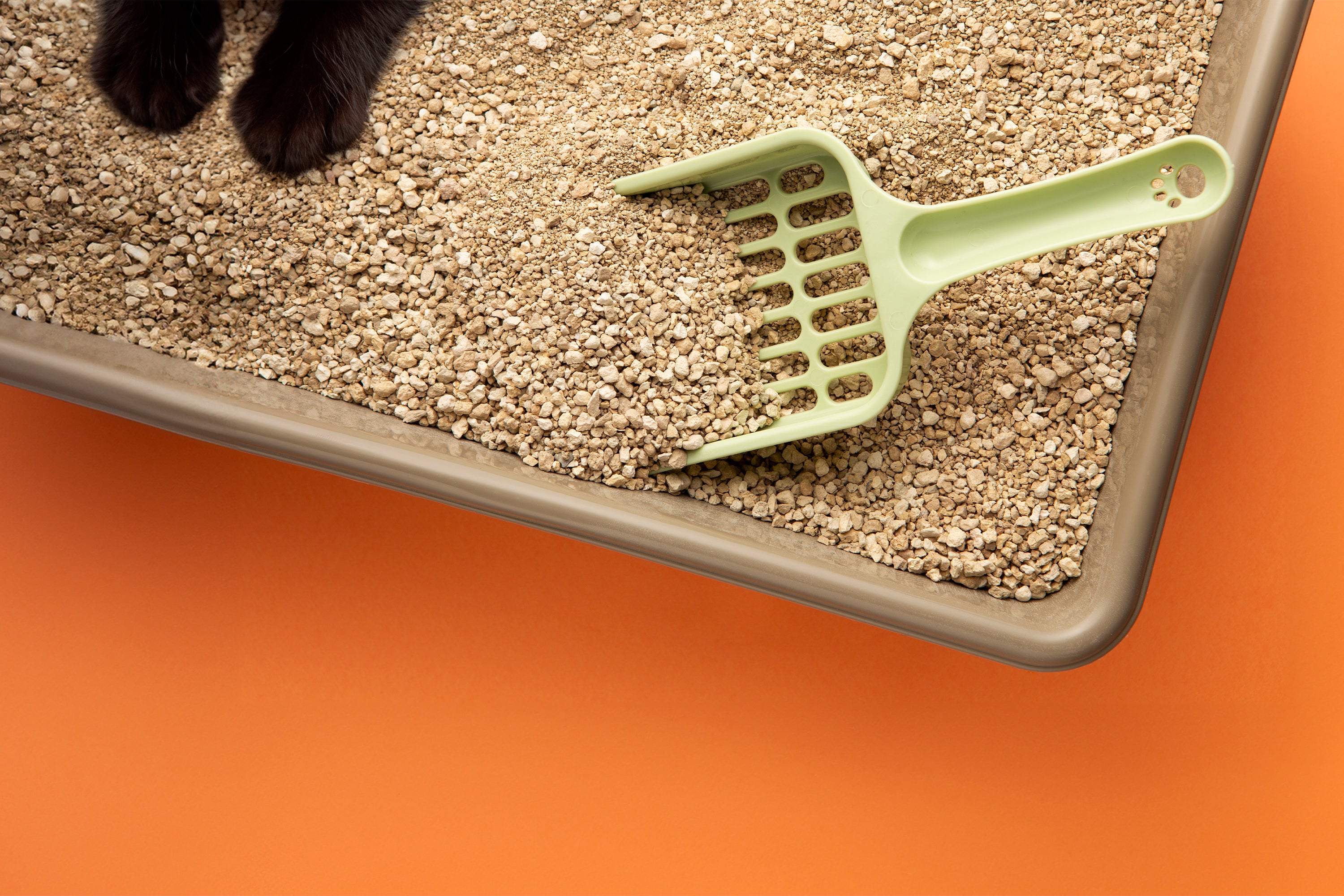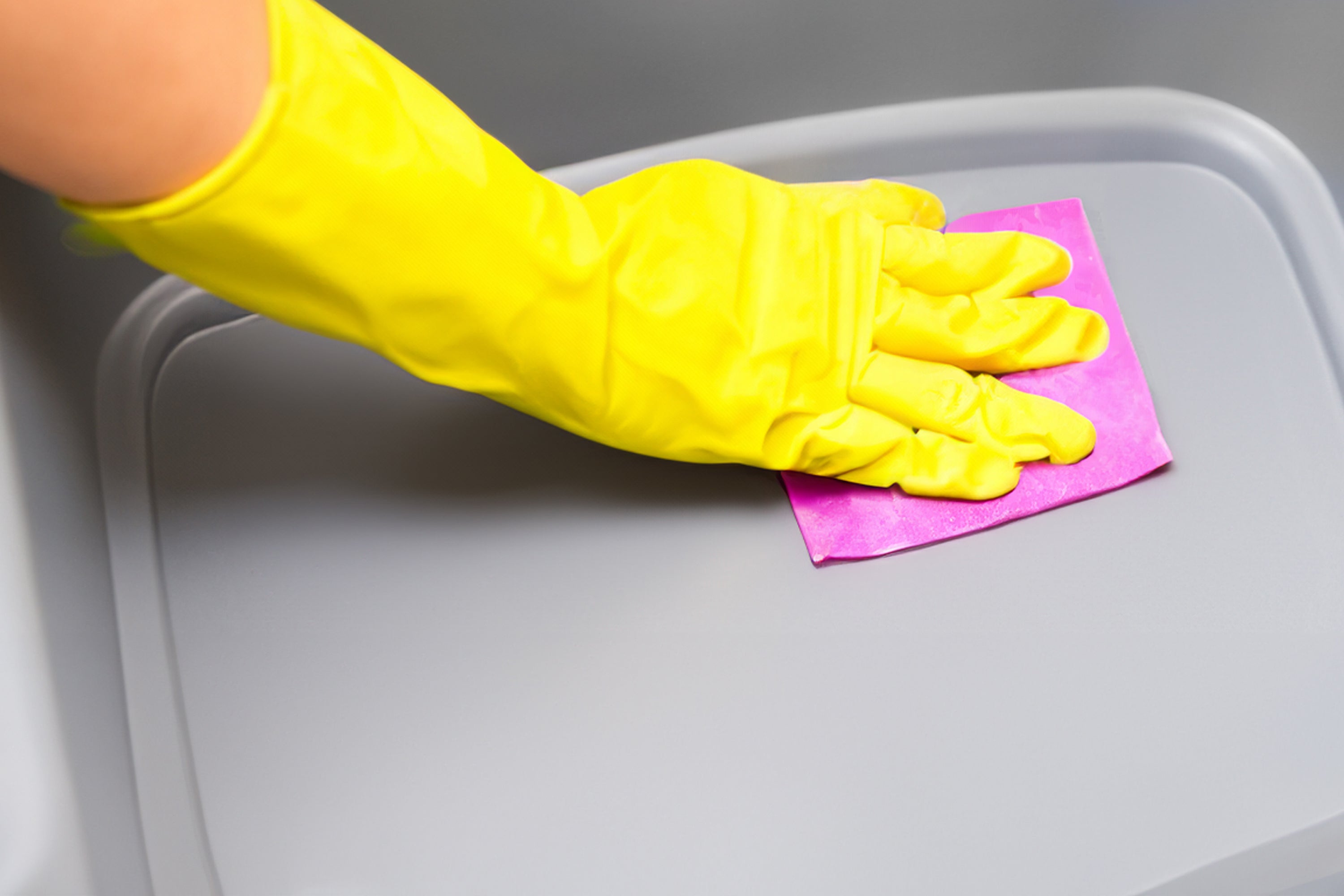W
elcoming a new kitten into your home is an exciting time. It's filled with cuddles, toys, and the beginning of a lifelong friendship. However, it's also a time to teach your pet some important habits. Chief among them is litter box training.
Showing your kitten how to use a litter box is crucial, not just for health and hygiene. It's a fundamental step in making sure your kitten grows into a well-adjusted, house-trained cat.
Still, many people find themselves asking, “how do you litter train a kitten?” They might have a general idea, but not any concrete steps they can use for how to train a kitten to use litter, or how to clean a kitty litter box.
In this guide, we'll show you how to achieve this in the best way possible. We'll start by exploring the ins and outs of litter box training, and provide some practical advice on how to maintain a clean spot for your kitten to do their business.
Whether you're a first-time cat owner or looking to brush up on your litter box management skills, this post is designed to provide you with the knowledge and tools you need for a healthy, happy living environment.

Litter Box Training 101
Understanding the Basics
Litter box training is more than a convenience. It's a fundamental part of a cat's health and well-being, especially for indoor cats. It provides a natural, instinctive place for cats to relieve themselves, where they can feel safe and secure.
It also helps maintain the cleanliness of your home, preventing the spread of bacteria and odors. For that reason alone, it's worth learning how to kitty litter train a kitten properly.
Where Natural Instincts Come In
Cats have an innate desire to bury their waste, a behavior that dates back to their wild ancestors. This instinct serves two main purposes: to avoid attracting predators and to maintain a disease-free living area.
Domestic cats retain this behavior, which is why they naturally gravitate towards using a litter box. As you train your cat, you want to preserve these natural instincts, rather than try to suppress them.
Preparation for Litter Training
Choosing the Right Litter Box and Location
The first step in litter box training is to choose an appropriate box. It should be large enough for your kitten to move around comfortably but low enough for them to enter and exit easily.
Place the litter box in a quiet, low-traffic area where your kitten can have some privacy. It should be tucked away, but still easily accessible at all times.

Selection of Cat Litter
The type of litter you choose can significantly affect how well your kitten takes to the litter box. Clumping litter is popular for how easy it is to clean, while non-clumping litter might be safer for younger kittens who are prone to eating and ingesting the litter.
Unscented litter is generally preferred by cats over scented varieties, which can be off-putting to their sensitive noses.
How to Litter Train a Kitten
Finding yourself wondering “how do I litter train a kitten?” With real steps you can actually understand and dive into? We're here to help. Below is what you need to get started on your kitten litter box journey.
Step-by-Step Guide
1. Gradual Introduction: Start by placing your kitten in the litter box after meals and naps, as these are times they're likely to go.
2. Encouragement: Gently scratch the litter with your finger to show your kitten what to do. Most kittens will instinctively start to dig.
3. Praise: When your kitten uses the litter box correctly, offer plenty of praise and a treat as a reward.
4. Repetition: Repeat these steps, to create and build consistency in your training approach.
Tip: Be patient and never punish your kitten for accidents outside the litter box. Instead, clean up accidents to remove odors and gently guide your kitten back to the litter box next time.
How to Train Kittens for Litter Box Use Consistently
Always keep the litter box clean, as cats are more likely to use this time and time again. Consider multiple litter boxes for multiple cats, and place them in different locations around your home.
If your kitten is reluctant to use the litter box, try swapping out different types of litter or boxes. Some kittens may prefer an enclosed box for privacy, while others might like an open box for easier access. If problems persist, give your veterinarian a call to rule out any underlying health issues.
Now, let's dive into how best to keep their litter box clean, shall we?

Litter Box Maintenance
The Importance of Cleaning
A clean litter box is vital for your cat's willingness to use the box regularly. Cats are naturally clean animals and are less likely to use a litter box if it's not up to their standards. This can unfortunately lead to accidents around the house.
Regular cleaning also prevents the buildup of bacteria and odors. There's no better way to keep your surroundings safe and secure for both you and your pet.
Smart Maintenance Routines
Daily Care:
● Scoop Daily: Remove waste from the litter box at least once a day. This keeps the box clean and prevents smells from taking over your space.
● Top Off Litter: After scooping, add fresh litter to maintain a depth of 2-3 inches. This encourages digging and covering behavior.
Weekly Care:
● Complete Change: Once a week, empty the litter box entirely. Clean it with mild soap and warm water, avoiding strong chemicals that could deter your cat from using the box.
● Litter Replacement: After cleaning, fill the box with fresh litter to an adequate depth.
● Sweep Up Surroundings: Keep a vacuum or broom handy to clean up any litter that gets kicked out of the box.

How to Clean Litter Box
Deep Cleaning Practices
Every so often, you want to give the litter box a deep clean, to make it look as good as new. Here's how to clean the cat litter box and how to clean cat litter.
1. Empty the Box: Remove all litter and dispose of it properly.
2. Wash the Box: Use hot water plus soap to scrub the box thoroughly. For natural alternatives, consider using vinegar or baking soda, which are effective and safe for cats.
3. Rinse and Dry: Rinse the box well to remove any residue. Dry it completely before adding new litter.
4. Replace Litter Thoroughly: Fill the box with fresh litter.

Dealing With Common Issues
Chemicals
How do you clean a litter box without exposing your cat to harsh chemicals? Well, for one thing, always choose cat-safe disinfectants or natural cleaning agents to avoid deterring your cat with the strong ingredients found in ammonia-based or heavily scented cleaners.
Lingering Smells
For odor control, sprinkle baking soda at the bottom of the box before adding new litter. It's a simple trick to keep smells at bay. If you're battling with odors, think about getting a litter box with a lid or a carbon filter to help contain and neutralize them.
Tracking
To tackle litter tracking, place a mat around the box to catch stray litter from your cat's paws, and consider switching to a litter with larger granules, which tend to track less.
Avoidance
If you find your kitten is hesitant to use the litter box, make sure it's easily accessible and has low sides for easy entry. Cats can be picky about their litter, so trying out different textures or materials might just do the trick in encouraging use.

Final Thoughts
Implementing these strategies means your home stays cleaner and your cat stays satisfied. This creates a comfortable and hygienic environment that you both will appreciate.
Above all else, consistency is key. Understanding and accommodating your kitten's needs will lead to the best living situation possible.
Every kitten is unique, and what works for one may not work for another. Be prepared to adapt your approach as you learn more about your kitten's preferences and behaviors. With time, patience, and care, these steps can become a seamless part of your routine, laying the foundation for a happy, healthy relationship with your feline friend.
Want to Receive the Educational Free Newsletter from Voyager Harness?
Discover All
Shop By Types of Harness
Air Mesh Harness | Step-In Air Mesh Harness | Step-In Air Cat Harness | Step-In Air Harness | Step-In Lock Cat Harness
Shop By Color
Black Cat Harness | Blue Cat Harness | Pink Cat Harness | Pink Cat Harness and Leash | Pink Step in Harness


